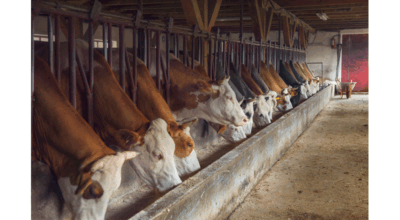Partnerships power conservation efforts
Published 9:29 am Wednesday, August 13, 2014
by Tom Vilsack
When USDA launched the Regional Conservation Partnership Program several months ago, we talked about our hope that this new way of doing business would build coalitions of unlikely partners and bring new money and resources for conservation projects to the table.
The overwhelmingly positive response to this new approach has far exceeded our initial expectations. Over the past several months, nearly 5,000 partners have come together to submit nearly 600 pre-proposals to USDA. All told, these coalitions of partners requested more than six times the $394 million in funding available from USDA for the first round of conservation projects, in addition to bringing their own, matching resources to the table.
The pre-proposal process has the added benefit of already completing the work of matching up potential partners and developing the mechanics of new conservation projects. While USDA itself won’t be able to fund every one of the proposals received this year, these fully-developed projects could attract funding from other sources or be eligible for USDA funding in the future—further expanding the total impact of the program.
Certainly, the progress we’ve made to date could never have happened without our traditional partners—local conservation districts, land trusts, wildlife and habitat preservation groups, and farmers, ranchers and foresters, among others—but the resource challenges of today require an expanded stable of resources and allies. USDA itself has invested more than $12.5 billion in conservation efforts since 2009, but we know that we will need everyone on board in order to make true headway against the water, soil and air quality issues that threaten the productivity and security of our nation’s farms and forests.
The Regional Conservation Partnership Program is part of the answer. The program takes the concept of “strange bedfellows” and turns it on its head. Rather than strong coalitions of conservation partners across communities, government, private landowners, for-profit companies and conservation organizations be the exception, this program will help to make them the norm. The program gives non-traditional partners a vehicle and a structure to work together towards common conservation goals. It provides a certain amount of government resources to get them started, but requires partners to think creatively about how to leverage additional funding and resources.
It’s an approach that makes good sense. Rather than serving solely as an investor in conservation projects, USDA can also serve as a catalyst for private investment to help meet the specific needs of local communities. The Regional Conservation Partnership Program allows us to both elevate fresh, new approaches to conservation, while at the same time offering continued support for proven, successful conservation methods.
We expect to provide $1.2 billion in funding for projects through the program over the next five years. With partners investing alongside USDA, we hope to double that investment, leveraging a total of $2.4 billion for conservation. Given the response thus far, we should have little trouble meeting that goal.
We can’t meet the challenges of the new century without partners of all kinds—farmers, ranchers, family forest private companies, universities, local and tribal governments, non-profit organizations and businesses—at the table. Together, we will forge a new era of conservation partnership that more effectively confronts the growing threats to our natural resources and keeps our land resilient and our water clean for generations to come.
TOM VILSACK is the USDA Secretary of Agriculture





